Norman
Allan | ||||
Dogs | |||
| |||
|
| ||
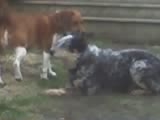 |
|
| |
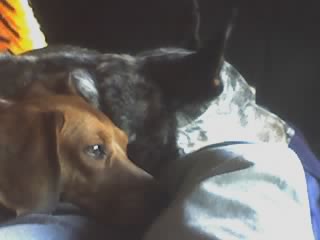 | other pages with pictures include: the little red piece of glass: a poem
| 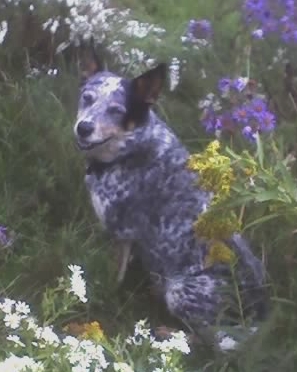 | |
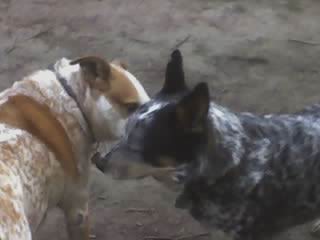 | Lucky
and Buster in Monarch Park a Cattle Dog and a half an Australian Cattle Dog and a perfect exsample of a cross (a half-breed) | ||
Toxic foods vetinfo is a great source of information on things like grapes (dangerous), onions (less so), chocolate (a bit)! see below | |||
 | Rita:
12 Dec 1997 | ||
 | Lucky: DOB 9 Jan 1998 an
australian cattle dog | 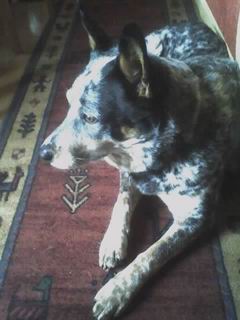 | |
| Diet Rita and Lucky had skin problems when younger. Sharron Kopnick(? name?) said, feed them anything you would eat yourself, and nothing that you wouldn't... which rules out all the commercial dog foods... | onions? Dogs
develop hemolytic anemia if they eat enough onions. I don't think that it matters
too much whether the onions are cooked or not. The quantity of onions required
is high enough that dogs can generally tolerate small doses of onions without
any problem and moderate amounts of onion without clinically apparent disease,
even though there may be measurable changes on lab | |
grapes? Grapes
are highly toxic for dogs, however...
Michael Richards, DVM writes
"I have fed my dogs a few grapes every now and then for years, so I don't
think there is a need to panic if a dog eats three or four grapes but if the whole
bunch is missing from the table one day, it would be good to think about watching
for any signs of a toxic reaction..." vetinfo | still Rita had an eczema until we found the Menonite meat, and still it took more than a year for the skin to heal. |
| |
So what do Rita and Lucky eat? (Now, I'm not recommending this diet. This is just what I've been doing, improvising without deep research. So you could take a look at the BARF diet for a more deeply researched approach.) |
Treats | ||
Mornings
| chicken necks Lucky and Rita get chicken necks for treats... "commercial" chicken necks might have hormone pellets injected in them! Not good for your dog. Not good for the chickens. Menonite chicken necks are Lucky's favorite food in the world, just about. | and chicken necks for treats (which must be Menonite or organic) and must be raw! (cooked chicken bones become brittle and splinter - they can be deadly. Raw bones is part of the dogs natural diet. They are digested to a large extent) they mooch commercial treats in the park and when Rita is particularly successful her eyes will start to run a goo/pus. | |
Evenings:
| When
I first steeled myself to give the dogs raw chicken necks (I "knew"
that raw was fine, but still, "chicken bones!"), Lucky was so delighted
with them that he wouldn't eat anything else. We had to withhold the necks and
it was two days before he would consent to eat his old diet. Then once, a year
later, I ran out of chicken necks and he wouldn't eat anything else for two days! To begin with, Rita didn't eat the necks until sometime, well after Lucky had been focused on them for mor than a year, I chopped off a small piece of a neck for Rita, which she ate. Did that a few times and then she was fine with eating them whole. (A few months ago Rita ponced on a raw shish kebab dropped on its way to the barbacue and wolfed it, stick and all. {I wasn't there [bath room].} Every day that week when I got home from work I'd say, with delighted surprise, "Ah, you're still with us." No symptoms at all! (I imaging she has the bits of stick inside her still.) So, during that week when I'd pick up her poo, in plastic, of course, a few times I palpated the poo to feel for the sticks. No sticks, but, and this is the point of this dog turd tale, the chicken neck vertebrae are not fully digested. Please pardon the dog poo story.
| ||
| omg: I forgot to mention that for a long while now I give Lucky half a "denta-stix" after each meal and his breath is much better! Pedigree's Denta Stix: medium | |||
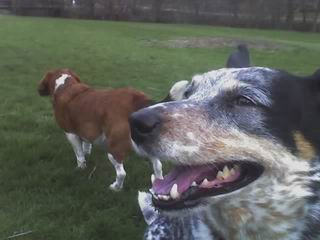 | |||
| Norman Allan Feedback: Talk to me. | 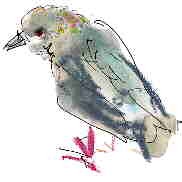 |